Sewing Machines: How to Choose and Care for Your Machine
Choosing the right sewing machine can feel like navigating a labyrinth, especially with the myriad of options available today. Whether you're a seasoned seamstress or just starting out, understanding your needs and the features of different machines is crucial. This article aims to illuminate the path to selecting the perfect sewing machine tailored to your projects and skill level. Moreover, we'll delve into essential maintenance tips to ensure your machine remains a reliable companion for years to come.
When it comes to sewing machines, it's vital to recognize that not all machines are created equal. There are three main types that cater to different sewing styles and expertise: mechanical sewing machines, electronic sewing machines, and sergers. Each type has its unique features and benefits, making it essential to assess your specific needs before making a choice.
- Mechanical Sewing Machines: These are typically simpler, relying on manual controls. They are perfect for beginners who want to learn the basics without overwhelming features.
- Electronic Sewing Machines: With a range of stitches and automatic functions, these machines offer more versatility and ease of use, making them suitable for intermediate to advanced sewists.
- Sergers: Designed for finishing edges and creating professional-looking seams, sergers are a great addition for those looking to take their sewing projects to the next level.
As you dive deeper into the world of sewing machines, several key features can significantly enhance your sewing experience. One of the first aspects to consider is the variety of stitch options. Different projects often require different stitches, and having a machine that offers a wide range can open up a world of creativity. Additionally, speed control is another crucial feature. It allows you to adjust the speed according to your comfort level, which is especially beneficial for beginners or when working on intricate designs.
The significance of different stitch types cannot be overstated. From basic straight stitches to decorative patterns, the type of stitch you choose can dramatically affect the quality and appeal of your finished project. For instance, a zigzag stitch is perfect for finishing raw edges, while a decorative stitch can add flair to any garment. Understanding these options helps you make informed decisions about your sewing projects.
Many modern sewing machines come equipped with built-in stitches, which can be a fantastic feature for those who prefer convenience. However, if you have a creative streak, the ability to create custom stitches can elevate your projects to new heights. This flexibility allows you to personalize your work, making each piece uniquely yours.
Speed control can be a game-changer, especially for beginners. It enables you to sew at a pace that feels comfortable, reducing the likelihood of mistakes. Imagine trying to navigate a tricky curve at high speed—it's like trying to race a car around a tight corner without brakes! With a good speed control feature, you can take your time and ensure precision in your sewing.
Another important consideration is the size and weight of your sewing machine. If you plan to transport your machine for classes or workshops, a lightweight, portable model will make your life much easier. However, if you have a dedicated sewing space, you might prioritize features over portability. Ultimately, it’s about finding the right balance that suits your lifestyle.
Now that you've chosen the perfect sewing machine, it's time to talk about maintenance. Just like a car, your sewing machine needs regular care to keep it running smoothly. This includes routine cleaning, oiling, and proper storage practices. Neglecting these tasks can lead to malfunctions and costly repairs down the road.
Cleaning your sewing machine is crucial for maintaining its performance. Dust, lint, and debris can accumulate in the machine's components, leading to issues like skipped stitches or thread jams. Regularly remove the bobbin case and clean out any debris. A small brush can be handy for this task. Think of it as giving your machine a spa day—keeping it clean ensures it operates at its best!
Even with the best care, there will be times when your sewing machine needs professional attention. Signs that indicate it's time to consult a professional include unusual noises, difficulty threading, or inconsistent stitching. Addressing these issues early can prevent more significant problems later on, keeping your sewing machine in tip-top shape.
1. How often should I clean my sewing machine?
It's recommended to clean your machine after every few sewing projects or at least once a month if you're using it regularly.
2. Can I use any oil for my sewing machine?
No, it's best to use oil specifically designed for sewing machines to avoid damaging the internal components.
3. What should I do if my machine is making strange noises?
If you hear unusual sounds, stop sewing immediately and check for any thread jams or debris. If the issue persists, consult a professional.
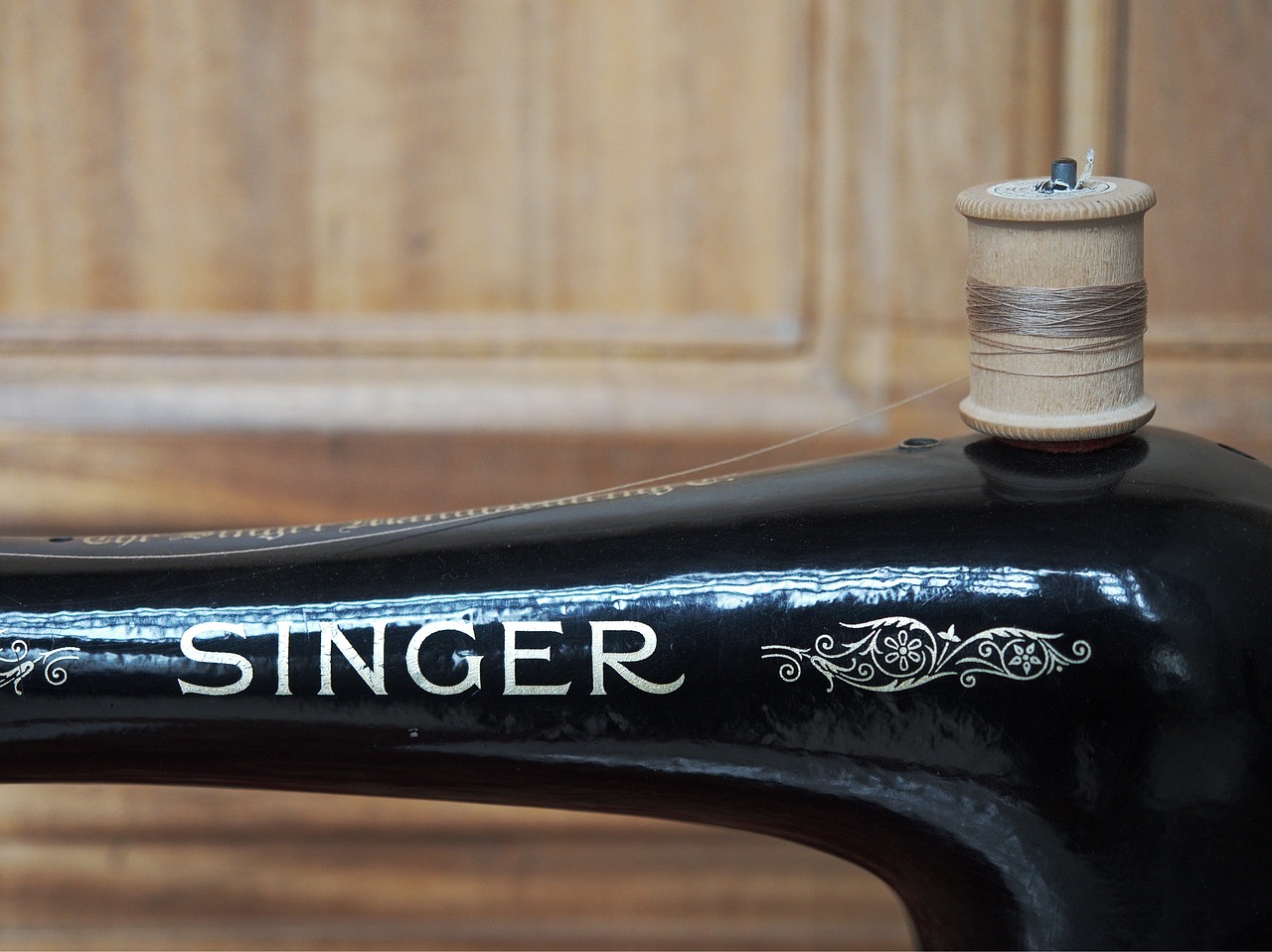
Understanding Types of Sewing Machines
When it comes to sewing machines, the variety can be overwhelming. It's like walking into a candy store where every type of machine has its unique flavor and purpose. To make the right choice, you need to understand the different types available and how they align with your sewing goals. Let's dive into the three main categories: mechanical sewing machines, electronic sewing machines, and sergers.
Mechanical sewing machines are the classic workhorses of the sewing world. They operate using a series of gears and levers, which means you have full control over every stitch. These machines are perfect for beginners who want to learn the basics without the complexity of modern technology. Imagine learning to ride a bike without training wheels; it’s all about mastering the fundamentals. Mechanical machines typically come with a few built-in stitches, making them ideal for simple projects like hemming or basic garment construction.
On the other hand, electronic sewing machines bring a whole new level of convenience and functionality. With features like touch screens, automatic buttonholes, and a wider range of stitch options, these machines are designed for those who want to explore their creativity. Think of electronic machines as the smartphones of the sewing world. They allow you to do so much more with just a few taps. If you’re looking to tackle more complex projects such as quilting or intricate garment sewing, an electronic machine might just be your best friend.
Lastly, we have sergers, which are often the unsung heroes in the sewing community. These machines are designed to finish edges and prevent fraying, giving your projects a professional touch. If you've ever seen a store-bought garment with beautifully finished seams, chances are a serger was involved. While sergers can be a bit more challenging to master, they are invaluable for anyone serious about sewing. Think of them as the secret sauce that elevates your sewing game to a whole new level.
To help you visualize these types, here’s a simple comparison table:
| Type of Machine | Best For | Key Features |
|---|---|---|
| Mechanical | Beginners | Basic stitches, manual control |
| Electronic | Intermediate to Advanced | Automatic functions, multiple stitch options |
| Sergers | Finishing edges | Overlock stitches, professional seam finishes |
In summary, choosing the right type of sewing machine is crucial for your sewing journey. Whether you opt for a mechanical machine for its simplicity, an electronic machine for its advanced features, or a serger for that polished finish, each has its unique advantages. Take your time to evaluate your projects and skill level, and you'll find the perfect match that will inspire your creativity and enhance your sewing experience.
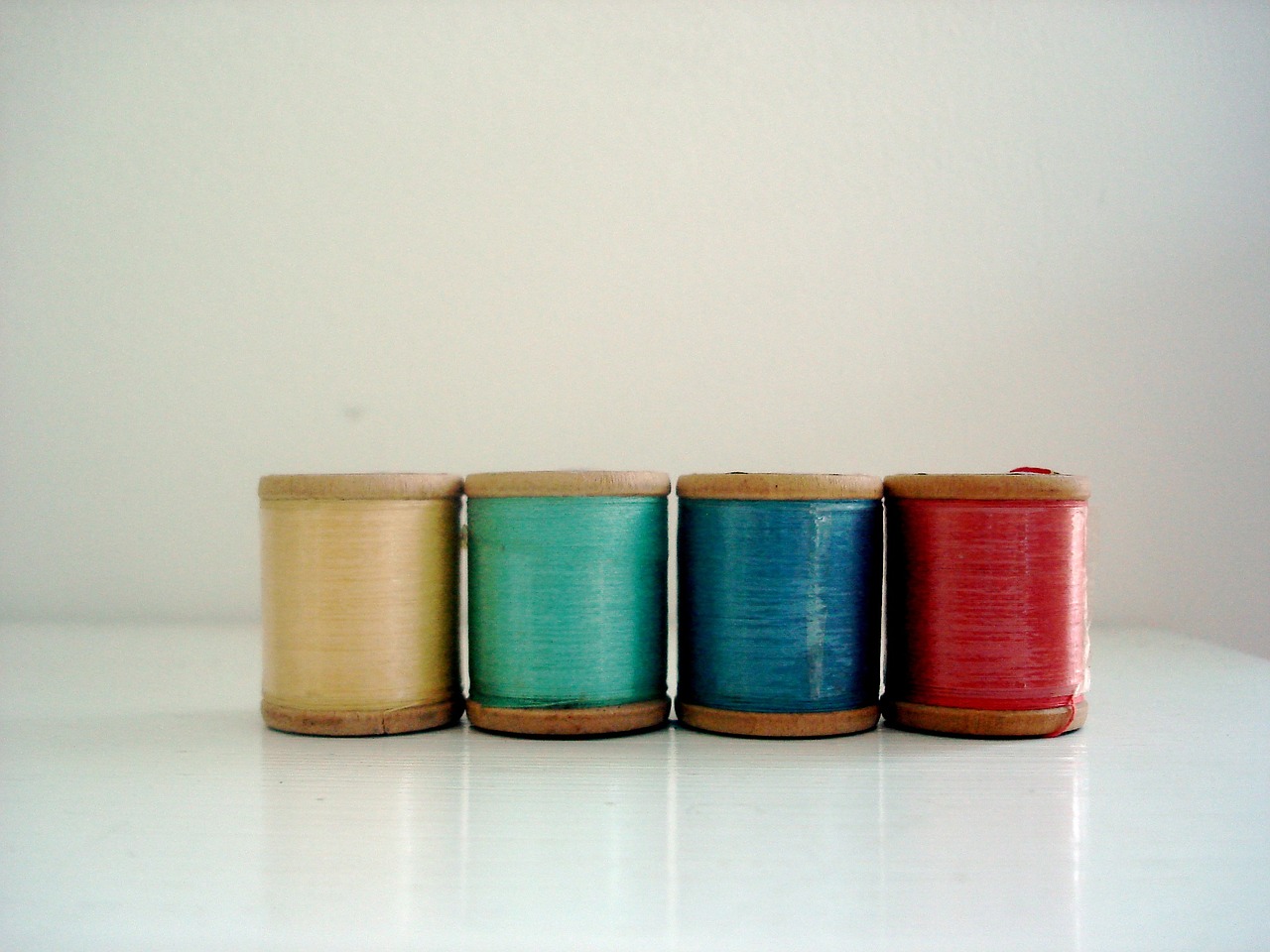
Key Features to Consider
Choosing the right sewing machine can feel a bit overwhelming, especially with the myriad of options available today. However, focusing on key features can simplify your decision-making process. First and foremost, consider the stitch options. Different machines offer a variety of stitches, from basic straight and zigzag to decorative and specialty stitches. If you're planning to work on diverse projects, having a machine with multiple stitch types can be a game changer. Imagine being able to create a beautiful quilt with intricate patterns or simply hem your pants with ease!
Another crucial feature to think about is speed control. This is particularly important for beginners or when tackling detailed projects. A machine with adjustable speed lets you take your time on delicate areas, ensuring precision. You wouldn’t want to rush through sewing a wedding dress, right? Speed control allows you to find that perfect rhythm, making the sewing experience more enjoyable.
Additionally, look for machines with automatic functions. Features like automatic needle threading and one-step buttonholes can save you significant time and frustration, allowing you to focus more on your creativity rather than getting bogged down by tedious tasks. It’s like having a helpful assistant by your side, making the sewing process smoother and more efficient.
Don't forget about portability and size. If you plan to attend sewing classes or workshops, a lightweight machine that’s easy to transport can be a lifesaver. You wouldn’t want to struggle lugging around a heavy machine, right? Consider your workspace, too; a compact design can fit snugly in smaller areas without sacrificing functionality.
To help you visualize these features, here’s a simple table summarizing some important aspects to consider:
| Feature | Importance |
|---|---|
| Stitch Options | Allows for versatility in projects |
| Speed Control | Enhances precision, especially for beginners |
| Automatic Functions | Saves time and reduces frustration |
| Portability | Facilitates easy transport for classes |
In summary, when selecting a sewing machine, keep these key features in mind to enhance your sewing journey. Each feature plays a significant role in not just how you sew, but also in how much you enjoy the process. After all, sewing should be a delightful experience where creativity knows no bounds!
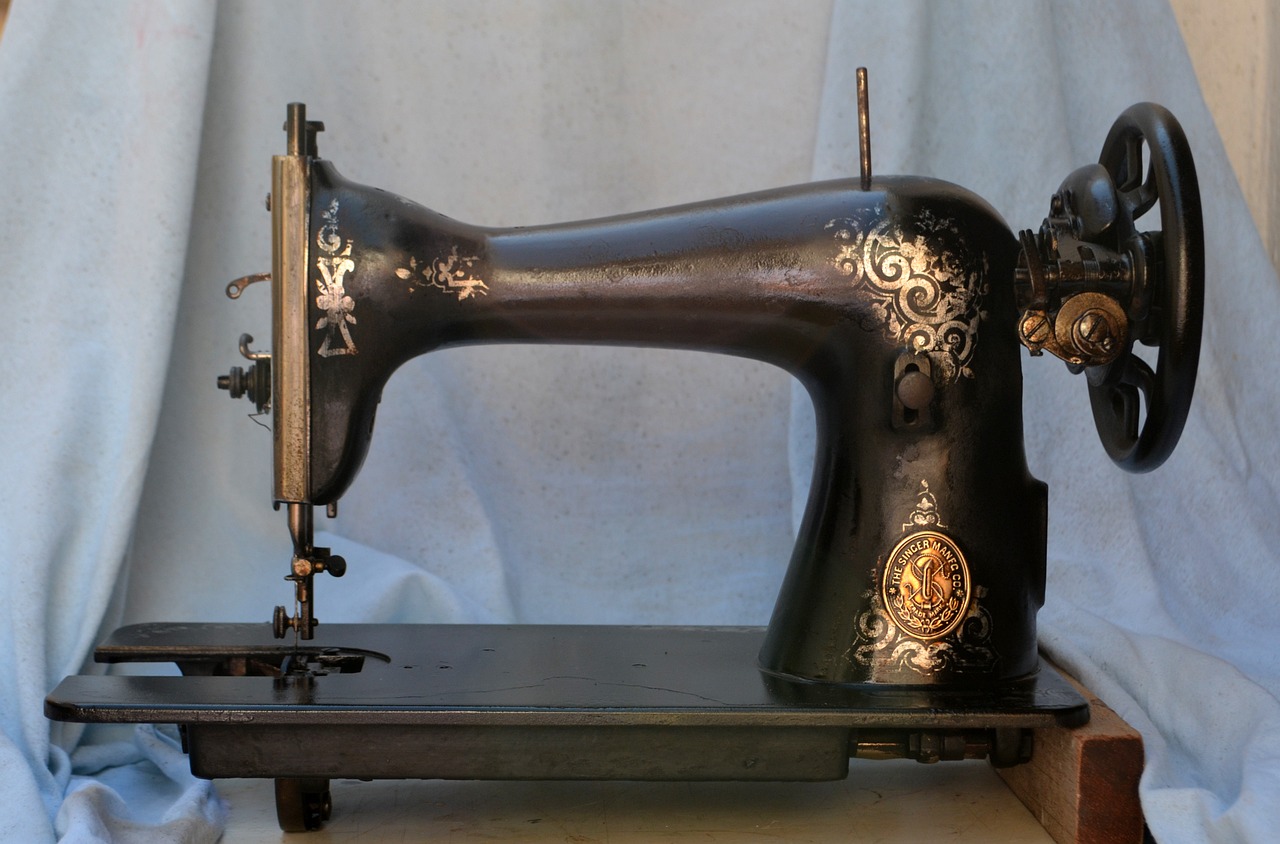
Stitch Options and Patterns
When it comes to sewing, the stitch options and patterns available on your machine can truly transform your projects from ordinary to extraordinary. Have you ever wondered why some garments look more professional than others? The secret often lies in the variety and quality of stitches used. From basic straight stitches to intricate decorative designs, understanding these options can enhance not just the aesthetic appeal of your work, but also its durability.
Most sewing machines come equipped with a range of stitch types, each serving a unique purpose. For instance, the straight stitch is the foundation of most sewing projects, perfect for seams and hems. However, delve deeper into your machine's capabilities, and you'll discover stitches like zigzag, which is essential for finishing raw edges and preventing fraying. Then there are specialty stitches such as overlock and stretch stitches, which cater to specific fabrics and techniques, making them invaluable tools in your sewing arsenal.
But wait, there's more! The beauty of modern sewing machines lies in their ability to offer a plethora of built-in patterns. These can range from simple geometric shapes to elaborate floral designs. Imagine the possibilities! You can embellish a plain shirt or add a personal touch to a quilt, making it truly one-of-a-kind. This versatility allows you to express your creativity and customize your projects according to your style.
Now, let's talk about the difference between built-in stitches and custom stitches. Built-in stitches are pre-programmed into your machine, providing you with a reliable set of options right out of the box. On the other hand, custom stitches allow you to create unique patterns tailored to your specific needs. This feature is particularly appealing for advanced sewists who want to push the boundaries of their creativity. By combining stitches or altering their length and width, you can craft designs that reflect your personality and vision.
Another crucial aspect to consider is the importance of stitch length and width. Adjusting these settings can dramatically influence the outcome of your project. For example, a longer stitch is often used for basting, while a shorter stitch is ideal for seams that require strength and durability. Understanding how to manipulate these settings can give you greater control over your sewing, allowing you to achieve professional-quality results.
In conclusion, the stitch options and patterns available on your sewing machine are not just features; they are gateways to creativity and innovation. By exploring the different types of stitches and understanding their applications, you can elevate your sewing projects to new heights. So, the next time you sit down at your machine, take a moment to experiment with the various stitches at your disposal. You might just discover a new favorite technique that inspires your next masterpiece!
- What is the most common stitch used in sewing? The straight stitch is the most commonly used stitch for various sewing projects.
- Can I create my own stitches on a sewing machine? Yes, many modern sewing machines allow you to create custom stitches for personalized designs.
- How do I choose the right stitch for my fabric? Consider the fabric type and the purpose of your project; for example, use a zigzag stitch for stretchy fabrics.
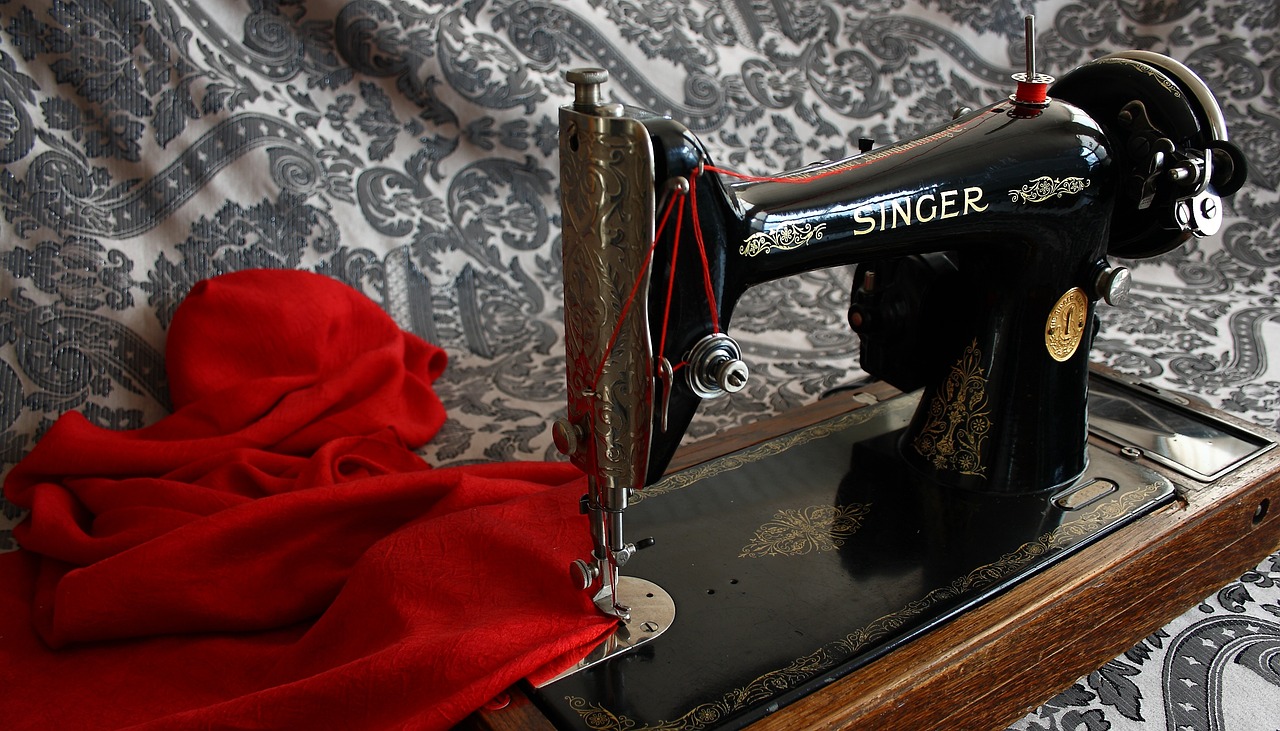
Built-in vs. Custom Stitches
When it comes to sewing, one of the most exciting aspects is the variety of stitches you can use. Understanding the difference between built-in stitches and custom stitches can significantly impact your sewing projects. Built-in stitches are pre-programmed into your sewing machine and can range from basic straight and zigzag stitches to more decorative options like floral or geometric patterns. These stitches are incredibly convenient for beginners and those who want to complete projects quickly without diving into the complexities of customization.
On the other hand, custom stitches offer a thrilling world of creativity. Imagine being able to design your own stitch patterns that perfectly match your project’s theme! Custom stitches allow you to unleash your artistic side, enabling you to create unique designs that can make your sewing projects stand out. This feature is especially beneficial for advanced sewists who want to add a personal touch to their work. However, it does come with a learning curve, as you'll need to familiarize yourself with the machine's programming capabilities.
To give you a clearer picture, here’s a simple comparison of built-in and custom stitches:
| Feature | Built-in Stitches | Custom Stitches |
|---|---|---|
| Ease of Use | Very Easy | Moderate to Difficult |
| Creativity | Limited to Pre-set Options | Unlimited Possibilities |
| Time Investment | Quick Selection | Requires Setup Time |
| Skill Level | Beginner Friendly | Best for Experienced Sewists |
So, which option should you choose? If you're just starting out or need a machine for basic repairs and projects, built-in stitches will serve you well. They provide a solid foundation and allow you to focus on mastering your sewing skills. However, if you’re looking to push the boundaries of your creativity and take on more complex projects, investing in a machine that supports custom stitches might be worth your while. After all, sewing is not just about functionality; it’s also about expressing yourself through your creations!

Importance of Speed Control
When it comes to sewing, one size definitely does not fit all, especially when it comes to speed. Speed control is a crucial feature that can make a world of difference in your sewing experience. Imagine trying to navigate a delicate fabric or intricate design at lightning speed—yikes! It can feel like trying to steer a race car on a narrow mountain road. This is where having a sewing machine with adjustable speed settings becomes invaluable.
For beginners, speed control allows you to start slow and steady, giving you the confidence to build your skills without feeling overwhelmed. It’s like learning to ride a bike; you wouldn’t start on a steep hill, right? You’d want to practice on flat ground until you feel comfortable. Similarly, a machine with speed control lets you take your time, ensuring that you can focus on mastering the basics before moving on to more complex techniques.
But it’s not just for novices! Even seasoned sewists can benefit from this feature. When working on intricate projects that require precision, such as quilting or detailed embroidery, having the ability to slow down can lead to cleaner lines and more professional results. Think of it as having a finely tuned instrument; the more control you have, the better the music you can create.
Many sewing machines offer a variety of speed settings, from a gentle crawl to a speedy sprint. Some even come equipped with a foot pedal that allows you to control the speed with your foot, giving you hands-free operation while you guide your fabric. This feature can be particularly beneficial during long sewing sessions, as it allows for a more natural and comfortable workflow.
To illustrate the importance of speed control, let’s take a look at a simple comparison:
| Speed Setting | Best For |
|---|---|
| Low Speed | Beginners, delicate fabrics, detailed work |
| Medium Speed | General sewing, patchwork, quilting |
| High Speed | Simple seams, heavy fabrics, production sewing |
As you can see, different speed settings cater to different sewing scenarios. By having the option to adjust your speed, you can tailor your sewing experience to match the project at hand. This flexibility not only enhances your efficiency but also improves the overall quality of your work.
In conclusion, speed control is not just a luxury; it’s a necessity for anyone serious about sewing. Whether you’re just starting out or are a seasoned pro, having the ability to adjust your machine's speed can lead to better results and a more enjoyable sewing experience. So next time you’re in the market for a sewing machine, don’t overlook this vital feature!
- What is speed control in a sewing machine? Speed control allows you to adjust the rate at which the machine sews, enabling you to sew at a pace that suits your project and skill level.
- Why is speed control important for beginners? It helps beginners start slowly, building confidence and skill without the pressure of sewing too quickly.
- Can speed control improve the quality of my sewing? Yes! Slower speeds allow for more precision, which is especially important for detailed or intricate work.
- Do all sewing machines have speed control? No, not all machines come with this feature, so it’s essential to check the specifications before purchasing.
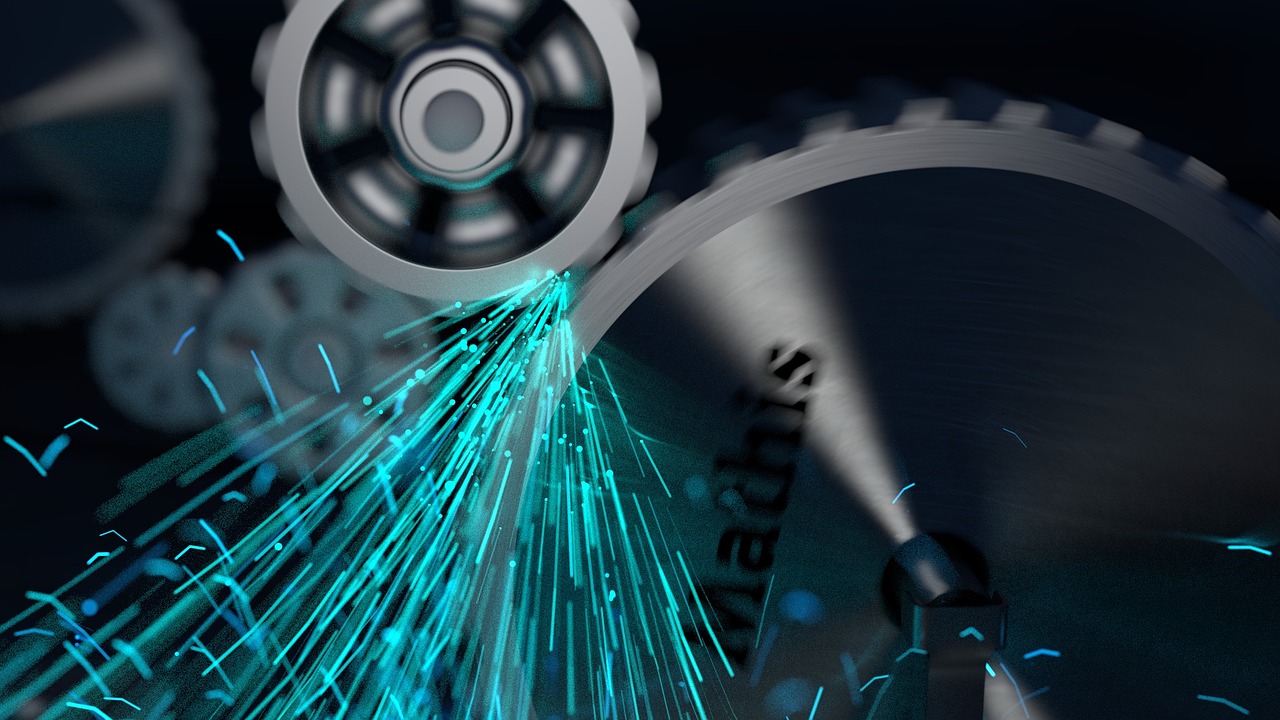
Portability and Size
When it comes to choosing a sewing machine, portability and size are crucial factors that can significantly influence your sewing experience. Imagine you’re excited about joining a sewing class or heading to a friend’s house for a crafting session. The last thing you want is to struggle with a bulky machine that feels like a weightlifting challenge! So, how do you find the perfect balance between functionality and convenience?
First, consider where you’ll be using your sewing machine. If you have a dedicated sewing room, a larger, more feature-rich machine might be ideal. However, if you plan to transport your machine frequently, perhaps to classes or workshops, a lightweight model would be more suitable. Portability is not just about weight; it also involves the machine's design. Look for machines that come with carrying cases or handles, making them easier to move around.
Next, let’s talk about size. A compact machine can save valuable space in your home, especially if you’re working with a small sewing area. However, keep in mind that smaller machines often come with fewer features, which might limit your sewing capabilities. To help you make an informed decision, here’s a quick comparison:
| Machine Type | Size | Portability | Features |
|---|---|---|---|
| Compact Machines | Small | Very Portable | Basic Stitches |
| Standard Machines | Medium | Moderately Portable | Variety of Stitches |
| Heavy-Duty Machines | Large | Less Portable | Advanced Features |
Ultimately, the right choice for you will depend on your personal sewing needs. Do you prioritize ease of transport over an extensive feature set? Or do you prefer a robust machine with all the bells and whistles, even if it means sacrificing some portability? Think about your sewing habits and future projects. Will you be making garments, quilts, or perhaps tackling home décor? Each type of project may require different tools, and understanding how often you’ll need to move your machine can guide your decision.
In conclusion, finding the right sewing machine is like picking the perfect partner for your creative journey. You want something that fits well with your lifestyle, enhances your abilities, and inspires you to create. So, weigh the pros and cons of size and portability carefully, and you’ll be well on your way to sewing success!
- What is the best portable sewing machine for beginners? - Look for lightweight models with user-friendly features and a good range of stitches.
- Can I take a larger sewing machine to classes? - While possible, it’s often cumbersome. Consider a smaller machine or a model designed for portability.
- How do I know if my sewing machine is the right size? - Evaluate your workspace and your sewing habits to find a machine that meets your needs without overwhelming your space.
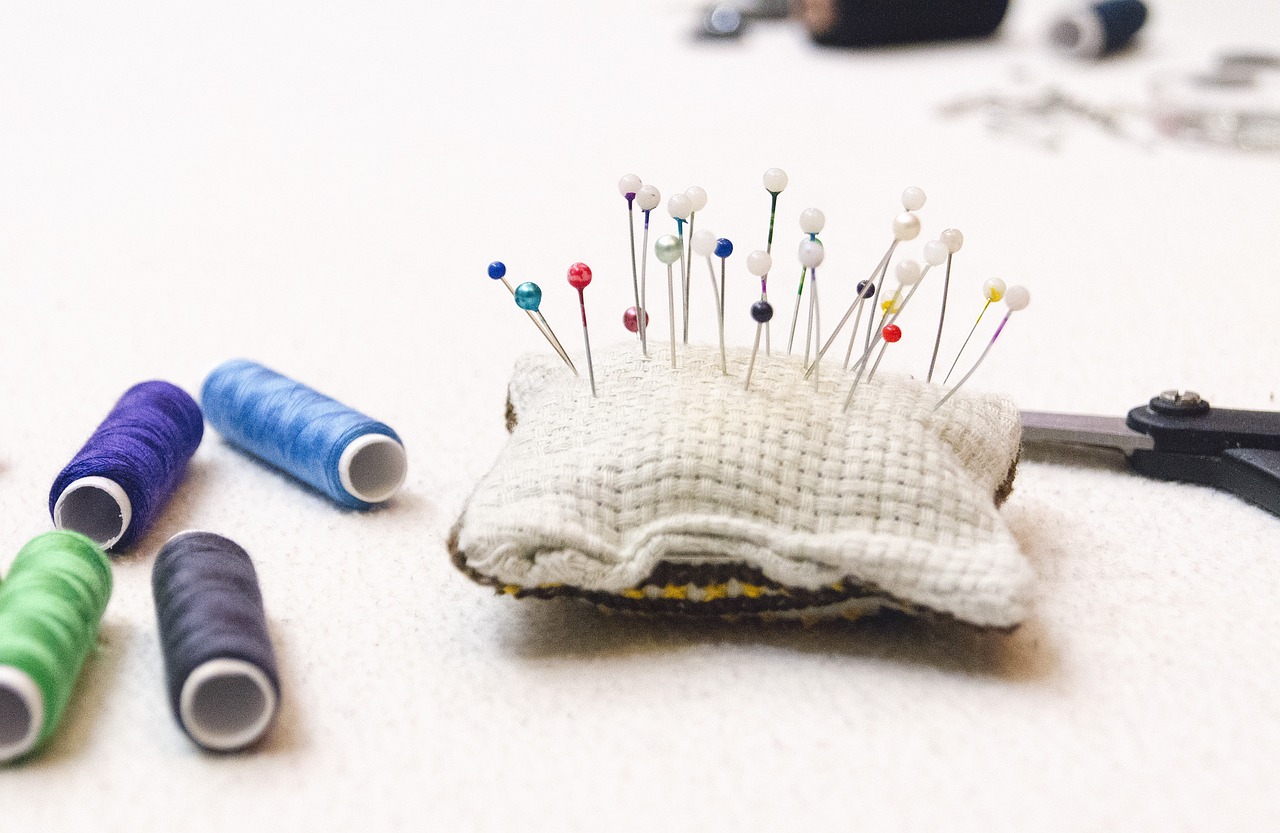
Essential Maintenance Tips
Taking care of your sewing machine is like nurturing a delicate flower; it requires attention, love, and a bit of know-how to thrive. Proper maintenance is crucial for the longevity of your sewing machine, ensuring that it operates smoothly and efficiently for years to come. Just as you wouldn’t neglect your car’s oil change, your sewing machine deserves the same level of care. Regular maintenance not only enhances performance but also prevents costly repairs down the road. So, let’s dive into the essential tips that will keep your sewing machine in tip-top shape!
First and foremost, cleaning your sewing machine should be a regular part of your sewing routine. Dust, lint, and fabric fibers can accumulate in various parts of the machine, leading to potential malfunctions. It’s recommended to clean your machine after every few sewing projects or at least once a month. To do this, you’ll need to gather a few supplies: a soft brush, a lint-free cloth, and a vacuum with a small nozzle attachment. Gently remove the needle plate and bobbin case, and use the brush to sweep away any debris. A quick vacuum can also help suck up stubborn lint that has settled in hard-to-reach areas. Remember, a clean machine is a happy machine!
Next up is oiling. Just like a car engine needs oil to run smoothly, your sewing machine requires lubrication to keep its moving parts functioning seamlessly. However, be cautious! Not all sewing machines need oiling, especially modern models that come pre-lubricated. Check your machine's manual for specific instructions on when and where to apply oil. If your machine does require oiling, use only the type recommended by the manufacturer. A few drops in the designated areas will do the trick, ensuring that your machine glides through fabric effortlessly.
Another important aspect of maintenance is storage. When you’re not using your sewing machine, it’s essential to store it properly to protect it from dust and potential damage. Consider investing in a quality dust cover or even a dedicated storage case. If you’re transporting your machine to classes or workshops, a padded case can prevent bumps and bruises. Additionally, always unplug your machine when it’s not in use to avoid any electrical issues.
Now, you might be wondering, “When should I seek professional help?” It’s a good question! There are several signs that indicate it’s time to consult a professional for repairs or servicing. If you notice unusual noises, skipped stitches, or if the machine simply won’t sew, don’t wait for the problem to escalate. A professional can diagnose issues that may be beyond your DIY capabilities and can perform necessary repairs to keep your machine running smoothly.
To summarize, here are the essential maintenance tips for your sewing machine:
- Regularly clean your machine after projects.
- Oil your machine according to the manufacturer’s instructions.
- Store your machine properly to protect it from dust.
- Seek professional help when you notice unusual issues.
By following these maintenance tips, you can ensure that your sewing machine remains a reliable companion on your creative journey. Just like a well-tended garden, your sewing machine will reward you with beautiful creations and a seamless sewing experience!
Q: How often should I clean my sewing machine?
A: It’s best to clean your sewing machine after every few projects or at least once a month to prevent lint buildup.
Q: Can I use any oil for my sewing machine?
A: No, you should always use the type of oil recommended by the manufacturer to avoid damaging your machine.
Q: What are the signs that my sewing machine needs professional servicing?
A: Look out for unusual noises, skipped stitches, or if the machine won’t sew at all. These are indicators that it’s time to consult a professional.
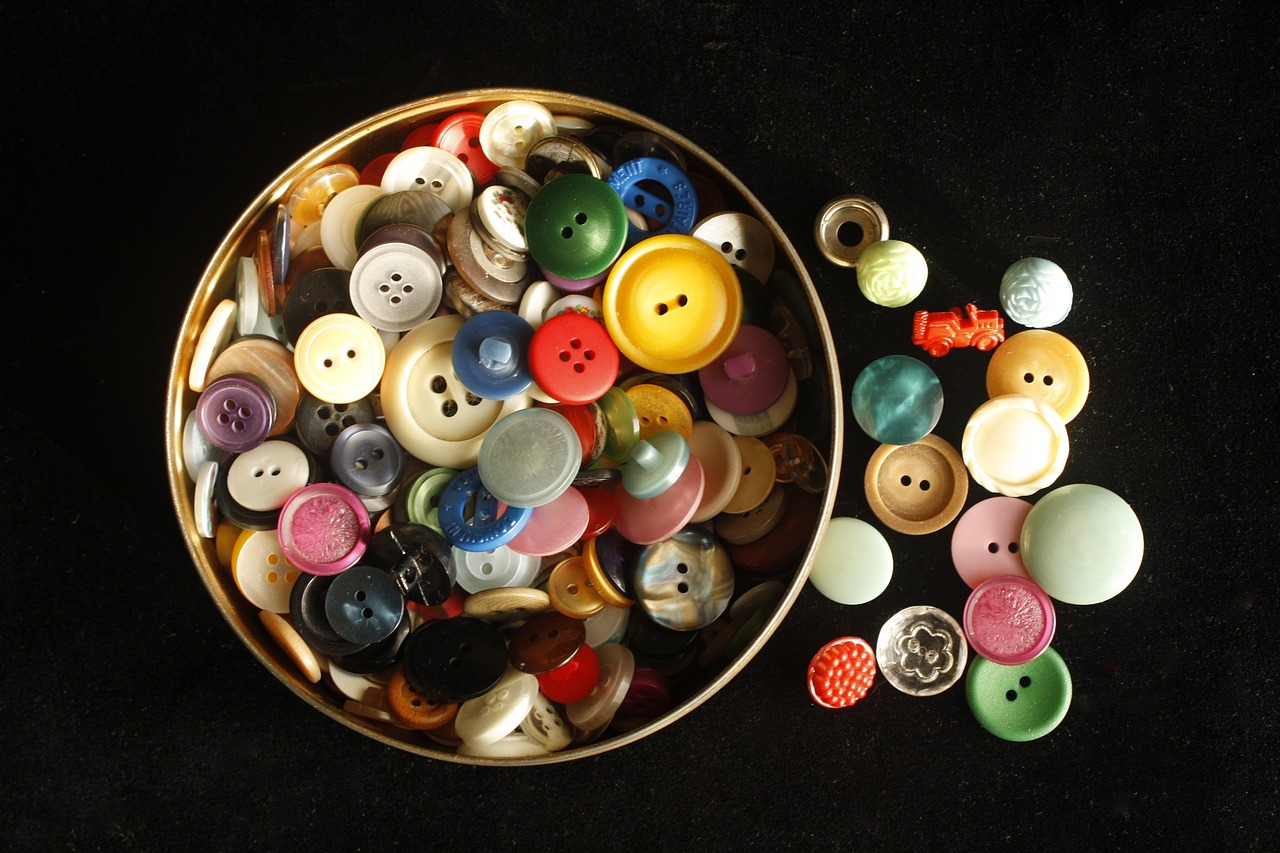
Cleaning Your Sewing Machine
Keeping your sewing machine clean is not just a chore; it's a crucial part of ensuring that your machine runs smoothly and lasts for years to come. Imagine trying to drive a car with a dirty engine—it's bound to cause problems, right? The same principle applies to your sewing machine. Regular cleaning helps prevent dust, lint, and fabric fibers from accumulating, which can lead to malfunctions or even permanent damage. So, how do you go about this essential task? Let’s dive into some effective cleaning practices that will keep your sewing machine in top shape.
First off, make sure to unplug your sewing machine before starting any cleaning process. Safety should always be your priority! Once that’s done, gather your cleaning supplies. You’ll need a soft brush, a lint roller or vacuum attachment, and a clean, dry cloth. These tools will help you tackle the various parts of your machine effectively.
Start by removing the needle and presser foot. This step not only makes cleaning easier but also protects these components from potential damage. Next, focus on the bobbin area. This is where lint tends to accumulate the most. Use your soft brush to gently sweep away any debris. If you notice stubborn lint, a lint roller can be a lifesaver. Just roll it over the area to pick up those pesky fibers!
Don’t forget to check the feed dogs! These little guys are responsible for moving your fabric through the machine, and they can get pretty dirty. A quick brush here can make a big difference. After you’ve cleaned the bobbin area and feed dogs, take a moment to wipe down the exterior of your machine with a dry cloth. This simple step not only keeps your machine looking new but also removes any dust that could eventually find its way inside.
Another important aspect of cleaning is the throat plate. This part can often harbor a lot of lint, so be sure to remove it and clean underneath as well. Some machines have a removable throat plate, while others may require a screwdriver. If you're unsure, consult your machine’s manual for guidance. Regularly cleaning this area will help maintain the precision of your stitches.
Lastly, don't forget about the sewing machine oil. After cleaning, it’s a good practice to oil your machine according to the manufacturer's instructions. This will keep the moving parts lubricated and functioning smoothly. Just a drop or two in the right spots can make a world of difference!
In summary, cleaning your sewing machine is a simple yet vital task that ensures its longevity and optimal performance. By dedicating a little time to this process, you’ll not only enhance your sewing experience but also protect your investment. Remember, a clean machine is a happy machine!
- How often should I clean my sewing machine? It's recommended to clean your sewing machine after every few sewing projects or at least once a month, depending on usage.
- Can I use regular oil for my sewing machine? No, always use oil specifically designed for sewing machines to avoid damage.
- What should I do if my sewing machine is still not working after cleaning? If problems persist, it may be time to consult a professional for repairs.

When to Seek Professional Help
Knowing when to seek professional help for your sewing machine can be a game-changer in maintaining its longevity and efficiency. Just like a car needs a mechanic when the engine light comes on, your sewing machine may require expert attention when certain signs arise. Ignoring these signs can lead to more significant issues down the road, potentially costing you more in repairs or even requiring you to replace your machine altogether. So, what are the tell-tale signs that it’s time to call in a pro?
First and foremost, if your machine starts making unusual noises, such as grinding or clunking, it’s a clear indication that something isn’t right. These sounds can often mean that something is misaligned or that there’s a mechanical issue that needs addressing. Just like you wouldn’t ignore a strange noise from your car, don’t overlook these sounds from your sewing machine.
Another sign to look out for is inconsistent stitching. If your stitches begin to skip or appear uneven, it could be a sign of a problem with the tension or the needle. While you might be tempted to adjust the settings yourself, it’s best to consult a professional if you can’t resolve the issue quickly. Remember, a well-functioning machine should produce smooth, even stitches every time!
Additionally, pay attention to any thread bunching or jamming. If you find yourself frequently unjamming your machine or dealing with thread tangles, it might be time to seek help. These problems can stem from various issues, including improper threading or more complex mechanical failures. A professional can diagnose the root cause and provide the necessary repairs.
Lastly, if you notice that your machine is overheating or if it emits a burning smell, it’s crucial to turn it off immediately and unplug it. This could indicate a serious electrical issue that requires immediate professional intervention. Just like you wouldn’t risk using a faulty appliance, don’t take chances with your sewing machine.
In summary, here are the key signs that it’s time to seek professional help:
- Unusual noises (grinding, clunking)
- Inconsistent stitching
- Frequent thread bunching or jamming
- Overheating or burning smell
By staying vigilant and recognizing these signs early, you can ensure that your sewing machine remains in optimal condition, allowing you to focus on what you love most—creating beautiful projects!
Q: How often should I have my sewing machine serviced?
A: It's generally recommended to service your sewing machine at least once a year, or more frequently if you use it heavily.
Q: Can I fix my sewing machine myself?
A: While some minor issues can be resolved at home, it's best to consult a professional for complex problems to avoid causing further damage.
Q: What should I do if my sewing machine is under warranty?
A: If your machine is under warranty, contact the manufacturer or retailer for guidance on repairs or servicing to ensure you don’t void the warranty.
Frequently Asked Questions
- What type of sewing machine is best for beginners?
For beginners, a mechanical sewing machine is often the best choice. They are user-friendly, less expensive, and perfect for learning basic stitches and techniques. Once you feel confident, you can explore more advanced options like electronic machines or sergers.
- How do I choose the right sewing machine for my projects?
Consider the types of projects you want to tackle. If you're into quilting, look for a machine with a wide throat space. For garment sewing, a machine with multiple stitch options and good speed control will be beneficial. Always think about your skill level and the features that will support your growth!
- What are the essential features to look for in a sewing machine?
Key features include stitch options, speed control, and automatic functions. A variety of stitches allows for creativity, while speed control helps maintain precision, especially for intricate work. Additional features like a built-in needle threader can also save you time and frustration!
- How often should I clean my sewing machine?
You should clean your sewing machine after every few projects or whenever you notice lint buildup. Regular cleaning helps prevent malfunctions and keeps your machine running smoothly. Don't forget to oil it according to the manufacturer's instructions!
- When should I seek professional help for my sewing machine?
If you notice unusual noises, skipped stitches, or if the machine won't sew at all, it's time to consult a professional. Regular servicing can also help extend the life of your machine, so don’t hesitate to seek help when needed!
- Can I transport my sewing machine easily?
Yes! Many sewing machines are designed to be portable. However, if you plan to take it to classes or workshops, consider the size and weight. Look for models that come with a carrying case for added protection during transport.
- Are built-in stitches better than custom stitches?
It depends on your needs! Built-in stitches are convenient and perfect for standard sewing tasks. However, if you want to unleash your creativity, having the option to create custom stitches can add a personal touch to your projects!



















